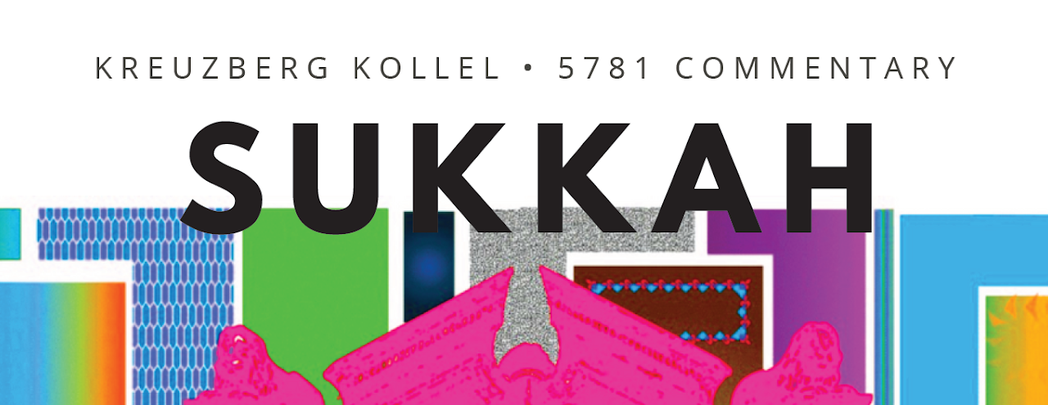§ The Gemara cites an opinion that disagrees with that of Rav Yosef. And Rabbi Yirmeya bar Abba said: The dispute between Rabbi Yosei bar Yehuda and the Rabbis is with regard to the song of the Drawing of the Water. Rabbi Yosei bar Yehuda holds that extra rejoicing also overrides Shabbat, and the Rabbis hold that extra rejoicing does not override Shabbat. However, with regard to the song that the Levites sang accompanying an offering, everyone agrees that it is part of the Temple service, and overrides Shabbat. The Gemara raises an objection to the opinion of Rav Yosef that the dispute is with regard to the song that the Levites sang accompanying the daily offering: The song of the Drawing of the Water overrides Shabbat; this is the statement of Rabbi Yosei bar Yehuda. And the Rabbis say: It does not override even the Festival. Apparently, their dispute is with regard to the song of the Drawing of the Water. Say that this is a conclusive refutation of the opinion of Rav Yosef. The Gemara concludes: Indeed, it is a conclusive refutation. The Gemara suggests: Let us say, based on this baraita, that it is with regard to the song of the Drawing of the Water alone that they disagree; however, with regard to the song that the Levites sang accompanying the daily offering, everyone says that it overrides Shabbat. If so, let us say that this will be a conclusive refutation of the opinion of Rav Yosef on two counts. According to Rav Yosef, the dispute is with regard to the song of the Drawing of the Water, and not with regard to the song the Levites sang accompanying the daily offering. The above suggestion refutes both aspects of his opinion. Rav Yosef could have said to you: They disagree with regard to the song of the Drawing of the Water and the same is true for the song that the Levites sang accompanying an offering. And the fact that they disagree specifically with regard to the song of the Drawing of the Water and do not specifically mention the song that the Levites sang accompanying the daily offering is to convey to you the far-reaching nature of the opinion of Rabbi Yosei bar Yehuda, that even the song of the Drawing of the Water also overrides Shabbat. The Gemara asks: But isn’t it taught in the mishna: This is the flute of the Place of the Drawing of the Water, which overrides neither Shabbat nor the Festival. By inference, this is the flute that does not override Shabbat; however, the flute that accompanies the daily offering overrides Shabbat. The Gemara asks: Who is the tanna of the mishna? If we say it is Rabbi Yosei bar Yehuda, didn’t he say that the song of the Drawing of the Water also overrides Shabbat? Rather, is it not the Rabbis, and say that this is a conclusive refutation of Rav Yosef on two counts. The Gemara concludes: Indeed, it is a conclusive refutation. The Gemara asks: What is the rationale for the opinion of the one who said: The primary essence of song is singing accompanied by musical instruments? The Gemara answers: It is as it is written: “And Hezekiah commanded to sacrifice the burnt-offering upon the altar. And when the burnt-offering began, the song of the Lord began also, and the trumpets, together with the instruments of David, king of Israel” (II Chronicles 29:27), indicating that the song of God that accompanies the offering is played by trumpets and other instruments. The Gemara asks: What is the rationale for the opinion of the one who said: The primary essence of song is singing with the mouth? The Gemara answers: It is as it is written: “And it came to pass, when the trumpeters and the singers were as one to make one sound” (II Chronicles 5:13). Since the verse does not mention any musical instrument played with the singing other than the trumpets, and the trumpets were not sounded as accompaniment for the singers, apparently the primary essence of song is singing with the mouth. The trumpets were sounded in order to accompany the sacrifice of the daily and additional offerings with the requisite sounds of tekia and terua. The Gemara asks: And according to the other tanna too, who holds that the primary essence of song is singing with the mouth, isn’t it written: “And Hezekiah commanded…the song of the Lord began also, and the trumpets, together with the instruments,” indicating that the instruments are the primary essence? The Gemara answers: This is what the verse is saying: “The song of the Lord began,” indicates that the primary essence is with the mouth; “with the instruments of David, King of Israel,” is to sweeten the sound, as the instruments are merely to accompany and enhance the singing. The Gemara asks: And according to the other tanna too, who holds that the primary essence of song is singing accompanied by musical instruments, isn’t it written: “And it came to pass, when the trumpeters and the singers were as one,” indicating that the primary essence is with the mouth? The Gemara answers: This is what the verse is saying: Through their juxtaposition, one derives that the singers are similar to the trumpeters; just as trumpeters produce their sound with an instrument, so too the singers produce their song with an instrument.




